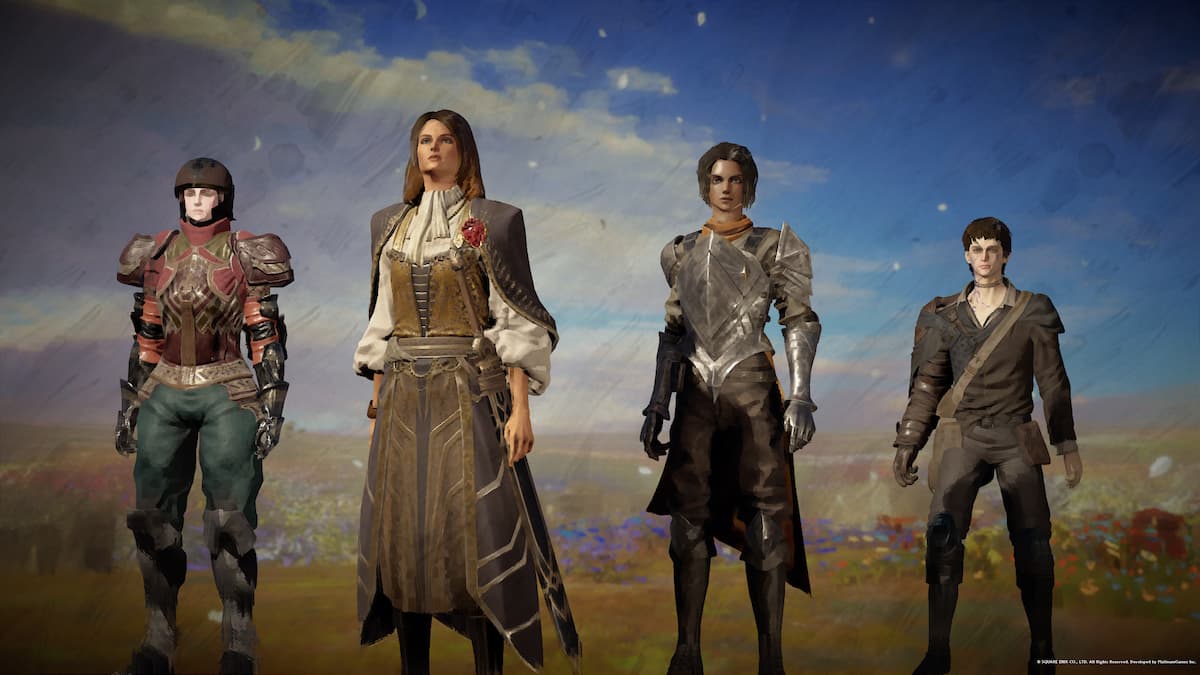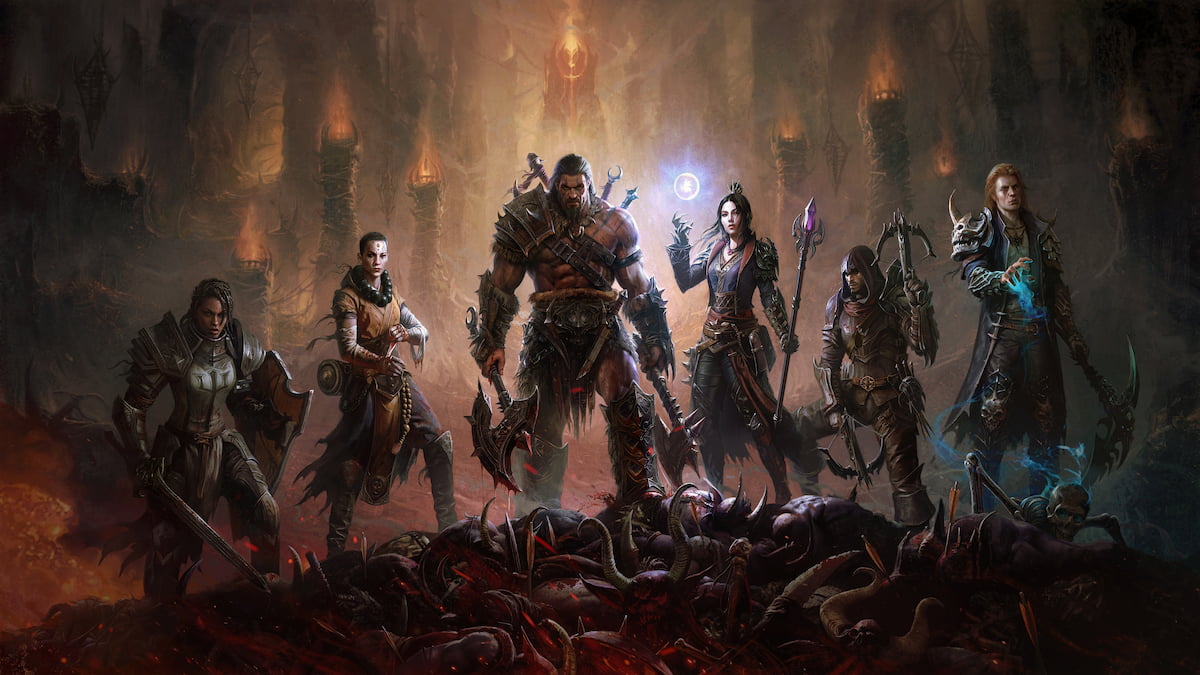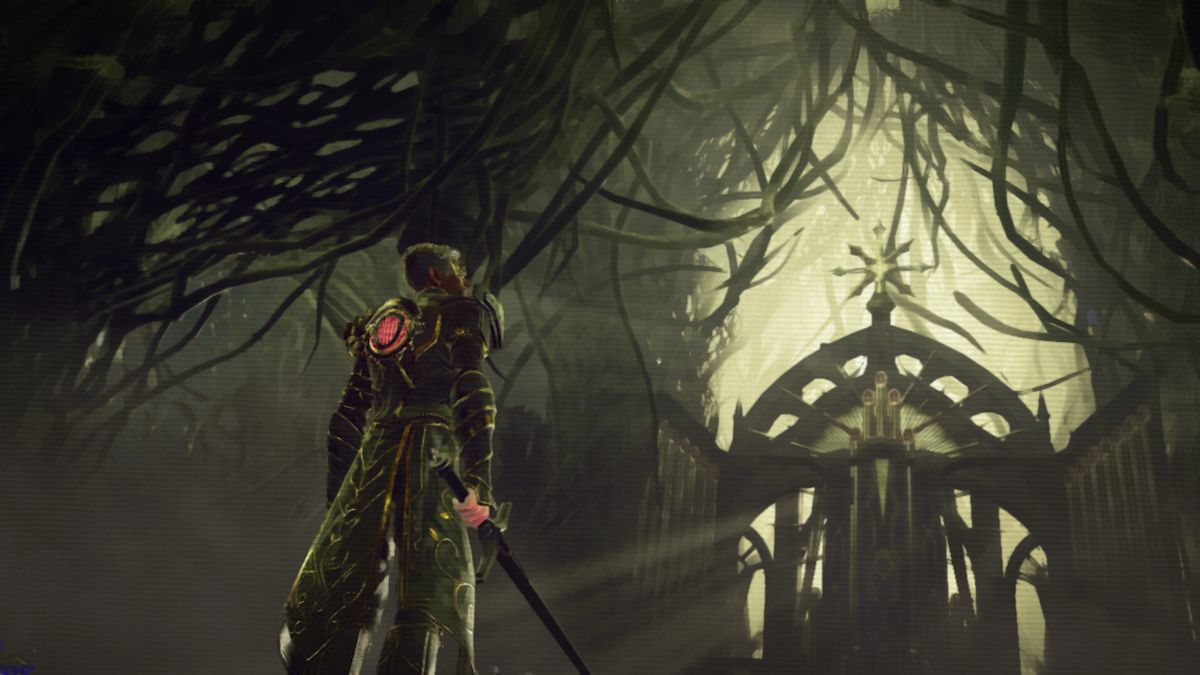Ever since bursting onto the scene with the instant classic that was Bayonetta, Platinum Games has had its share of peaks and valleys. For every well rounded package like Nier: Automata, there’s a lopsided project like Teenage Mutant Ninja Turtles: Turtles in Manhattan. Babylon’s Fall leans toward the latter, feeling like the studio’s biggest missed opportunity to date.
First impressions

Looking back at Platinum Games’ magnum opus within the action genre, Bayonetta’s opening cinematic was polished for the time, exuding a level of confidence that translated from cutscene to gameplay. Its style shone through, communicated by equal parts stylized choreography and competent rendering for its era.
Babylon’s Fall has none of this sheen to carry players through its opening moments, or the rest of the adventure for that matter. It employs a brushwork style that attempts to simulate the look of a painting in motion, but there’s much to be desired from its execution.
Stylized visuals can look stunning when they’re integrated properly into a game’s vision. Every aspect of its final output, from its polygon budget to its effects work to its overall art design, must be carefully balanced to achieve an attractive look.
Unfortunately, Platinum Games’ implementation inhibits the entire visual presentation to the point that even serious cinematics are difficult to take seriously. Closeups and mid-distance shots of character models look worse than anything from Bayonetta, a nearly 13-year-old game made two console generations ago. Environments hardly fare better, lacking any sort of presence as everything blends together into a mushy soup of simplistic geometry and low resolution textures. That’s to say nothing of awkward effects such animated paint brush strokes that just add noise to the image.
It’s a hideous game in motion, backed by a story that barely registers within your mind. There’s something about powerful humans capable of attuning to a device, a Gideon Coffin, that lets them scale a special tower. Doing so is apparently the only hope Neo Babylon has of surviving. Go in expecting fluff that merely exists to tie the levels together and nothing more.
Diving into the early game

Poor presentation would be easy to overlook if the gameplay delivered on its promise. After all, even the worst games from the studio tend to offer decent action at minimum.
This applies to Babylon’s Fall with major caveats. On its own, the basic combat is nothing to write home about. It lacks the sort of gravitas you come to expect from Platinum. Games like Bayonetta and Nier: Automata feel good from the outset, whereas it takes Babylon’s Fall time to reach a competent level of player satisfaction.
In summary, each player has a light and heavy weapon slot in addition to two spectral slots. There are six weapons in total, with each offering a different utility depending on which slot said weapon is assigned to.
As an example, the shield only blocks when placed in the light slot, meanwhile it parries in the heavy weapon slot. When attached to a spectral slot, the player summons a spectral shield that can block incoming damage while using the light and heavy slots.
This weapon slot system serves as the basis for what makes Babylon’s Fall work when it is firing on all cylinders. The game is at its best when you’re experimenting with its tools. The seemingly surface-level combat becomes so much more as you grow to understand what weapons offer when placed in each slot. Delving outside your comfort zone results in discovering some combo potential or special technique that pushes you away from resting on the same inputs over and over.
When you begin experimenting with the different weapon types and adjusting your playstyle along with equipped gear, the Babylon’s Fall’s potential peers through your peripheral vision. For example, As you equip an armor piece that increases spirit regeneration — this game’s version of stamina — upon successful parries, you add the shield to a repertoire that otherwise would not have included it.

This in turn changes the way you play after you’ve settled into a lull. Maybe you had a loadout that consisted of a sword and bow, then the aforementioned enchantment pushes you to replace the heavy weapon slot with a shield. Now, you’re discovering an entire combat system that might have otherwise slipped by you.
The satisfaction arises when you attempt synergizing the moment to moment combat along with its role playing elements. Combined with a greater understanding of its core systems that come with experience, such as spirit management, the skill ceiling expands in a subtle yet compelling way.
For example, let’s say one of your armor pieces increases your critical damage after reaching a certain number of consecutive hits, meanwhile you still have that other armor piece that regenerates spirit upon successful parries.
To make use of the latter enchantment, you are pushed to master parrying, which is a reward in and of itself. In order to bank on the critical damage enchantment, you want to maximize the amount of hits per second. Ideally, this is where the swiftness of a sword comes in. Then, you find out a spectral hammer employs stun when charged without knocking enemies back like the blast rod, keeping them within range. The sword also has a combo finisher that knocks foes back, meaning you have to remain consciously aware to reset sword combos with a delay or spectral attack.
That experience is wildly different from a person that rocks a shield in the light slot along with a bow in the heavy slot, along with blast and nova rods in the spectral slots. Babylon’s Fall encourages player expression through the way its role playing elements and combat meld together.
Drip-feeding content
As great as Babylon’s Fall feels when it clicks, it suffers from inconsistent pacing. It takes several hours to begin approaching its full potential. Simple systems such as crafting aren’t introduced until roughly 40% of the way through the story. Gideon Coffins, which are your character’s backbone, have a customization system that doesn’t open up until after completing the game’s fifth floor. For context, there are seven total floors, translating to about 70% of the experience. Some of the slick Dynamis abilities advertised in pre-release marketing such as the ability to tether to an enemy or cast debuffs only just get introduced at this point too. In an even more baffling design decision, the ability to switch attack modes doesn’t unlock until after finishing the roughly 30 hour story.
Imagine how differently the community would have received Bayonetta had a high-level technique like dodge offset been locked behind story completion or some arbitrary late-game threshold. Gating such crucial systems behind so many hours of gameplay is a guaranteed way to kill your live service title. Without enough early hooks, players are bound to lose faith in what the game offers.
Live service hurdles

Surprising no one, Babylon’s Fall’s live service trappings are its biggest failing. The way it handles loot, crafting, and customization could just as well exist in a self-contained single player experience with appropriate tweaks.
It’s everything else that disappoints — the co-op integration, game balancing, and overall structure. While missions can be completed solo, they feel balanced around a squad of players. It’s never difficult as a solo player, but combat arenas can grow draining as the hours pass.
Unfortunately, adding other players fixes one flaw at the expense of introducing others. With a full squad, missions become almost trivial, but that’s not the worst issue.
Action games thrive on legibility. Distinct visual and audio cues exist to signal when players should utilize specific tools, such as parries or dodges. This considered design is discarded in a multiplayer setting, whereby the amount of numbers, enemies, and effects work filling the screen at once make it impossible to survey the battlefield.
Whatever semblance of depth exists gets tossed aside when playing with others as these excursions devolve into button mashing. Considered actions such as parries become next to impossible to land as enemies’ telegraphed animations get lost in the flurry of players and effects work.
The verdict
Every solid element is buried underneath layers of padding that severely limit the player experience. Why should an action RPG take a dozen hours to introduce crafting? Why are attack modes locked behind story completion? The list goes on. Coupled with shoddy game balancing, its surrounding missions and combat encounters fail to supplement the combat and role playing systems nestled within.
There’s a sense that Babylon’s Fall was never meant to be a live service game. Perhaps it was altered late in development, leading to the incongruous experience we have now. It’s especially frustrating because it feels like it could have been a Platinum Games hit without the live service elements that inhibit the experience at every corner.
Final Score:
5.5 / 10
| + | Combat gets progressively better |
| + | Once it clicks, it feels great to play |
| – | Takes too long to introduce crucial features |
| – | One of the ugliest games of the console generation |
| – | The story might as well not exist |
Gamepur team received a PlayStation code for the purpose of this review.





Published: Mar 3, 2022 03:16 pm